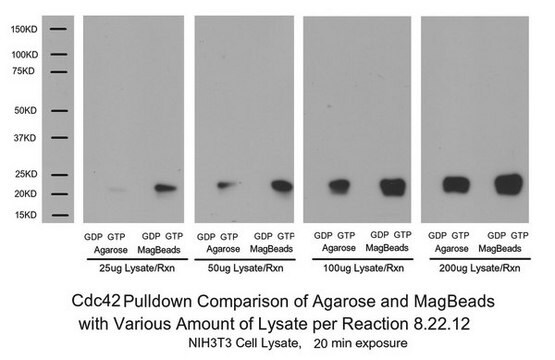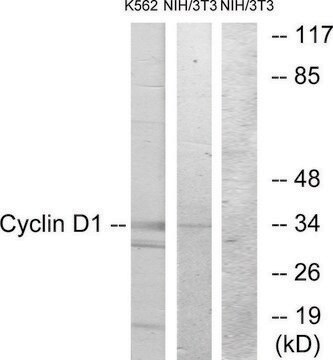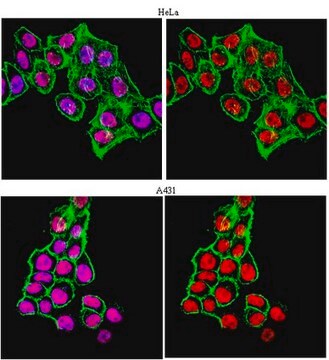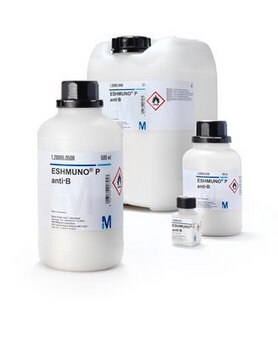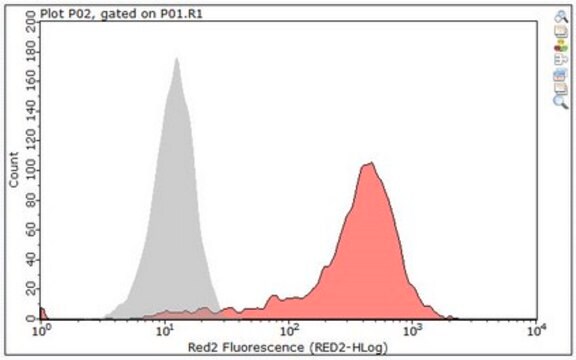ABN1653
Anti-Dysbindin
from rabbit, purified by affinity chromatography
Synonyme(s) :
Biogenesis of lysosome-related organelles complex 1 subunit 8, BLOC-1 subunit 8, Dysbindin-1, Dystrobrevin-binding protein 1, Hermansky-Pudlak syndrome 7 protein, HPS7 protein
About This Item
IF
IHC
IP
WB
immunofluorescence: suitable
immunohistochemistry: suitable (paraffin)
immunoprecipitation (IP): suitable
western blot: suitable
Produits recommandés
Source biologique
rabbit
Niveau de qualité
Forme d'anticorps
affinity isolated antibody
Type de produit anticorps
primary antibodies
Clone
polyclonal
Produit purifié par
affinity chromatography
Espèces réactives
human, mouse, rat
Technique(s)
immunocytochemistry: suitable
immunofluorescence: suitable
immunohistochemistry: suitable (paraffin)
immunoprecipitation (IP): suitable
western blot: suitable
Numéro d'accès NCBI
Numéro d'accès UniProt
Conditions d'expédition
ambient
Modification post-traductionnelle de la cible
unmodified
Informations sur le gène
human ... DTNBP1(84062)
Description générale
Spécificité
Immunogène
Application
Immunohistochemistry Analysis: A representative lot detected Dysbindin in Immunohistochemistry applications (Ito, H., et. al. (2010). Mol Psychiatry. 15(10):976-86).
Immunofluorescence Analysis: A 1,000 dilution from a representative lot detected Dysbindin in P8 mouse brain hippocampus tissue (Courtesy of Dr Koh-ichi Nagata at Aichi Human Service Center).
Immunoprecipitation Analysis: A representative lot detected Dysbindin in Immunoprecipitation applications (Ito, H., et. al. (2010). Mol Psychiatry. 15(10):976-86).
Immunocytochemistry Analysis: A representative lot detected Dysbindin in Immunocytochemistry applications (Yuan, Q., et. al. (2016). Biol Psychiatry. 80(4):312-22).
Western Blotting Analysis: A representative lot detected Dysbindin in Western Blotting applications (Lee, S.A., et. al. (2015). J Biol Chem. 290(11):7087-96).
Immunoprecipitation Analysis: A representative lot detected Dysbindin in Immunoprecipitation applications (Lee, S.A., et. al. (2015). J Biol Chem. 290(11):7087-96).
Western Blotting Analysis: A representative lot detected Dysbindin in Western Blotting applications (Ito, H., et. al. (2010). Mol Psychiatry. 15(10):976-86).
Immunocytochemistry Analysis: A representative lot detected Dysbindin in Immunocytochemistry applications (Ito, H., et. al. (2010). Mol Psychiatry. 15(10):976-86).
Neuroscience
Qualité
Immunohistochemistry Analysis: A 1:250 dilution of this antibody detected Dysbindin in human cerebellum tissue.
Description de la cible
Liaison
Forme physique
Stockage et stabilité
Autres remarques
Clause de non-responsabilité
Vous ne trouvez pas le bon produit ?
Essayez notre Outil de sélection de produits.
Code de la classe de stockage
12 - Non Combustible Liquids
Classe de danger pour l'eau (WGK)
WGK 2
Point d'éclair (°F)
Not applicable
Point d'éclair (°C)
Not applicable
Certificats d'analyse (COA)
Recherchez un Certificats d'analyse (COA) en saisissant le numéro de lot du produit. Les numéros de lot figurent sur l'étiquette du produit après les mots "Lot" ou "Batch".
Déjà en possession de ce produit ?
Retrouvez la documentation relative aux produits que vous avez récemment achetés dans la Bibliothèque de documents.
Notre équipe de scientifiques dispose d'une expérience dans tous les secteurs de la recherche, notamment en sciences de la vie, science des matériaux, synthèse chimique, chromatographie, analyse et dans de nombreux autres domaines..
Contacter notre Service technique